8. No Country for Old Men (Coen brothers, 2007)
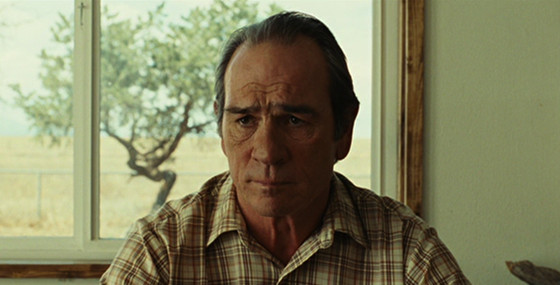
The winner of the 2008 Oscar for Best Picture, “No Country for Old Men” focuses on a hunter, Llewelyn Moss (Josh Brolin), who discovers several dead bodies and a suitcase containing $2 million; the aftermath of a drug deal gone wrong. Meanwhile, hitman Anton Chigurh (Javier Bardem in an Oscar-winning performance) is hired to recover the money, while Sheriff Bell (Tommy Lee Jones) is on Chigurh’s trail after he escaped police custody.
After Moss’ mother-in-law reveals his location to a group of Mexicans who have been tracking him, he is killed. Later, Chigurh interrogates Moss’ wife, but she is uncooperative; afterwards, Chigurh leaves the house, her fate undisclosed.
Later, Chigurh is in a car accident and bribes two bystanders as he flees the scene with a broken arm. In the film’s final scene, Sheriff Bell has a discussion with a friend about a dream he had in which his father ascends to heaven, but Bell follows this story with the film’s final line: “And then I woke up.”
The ending, much like the rest of the movie, is bleak, violent, and nihilistic, bringing the film to a perfect close while still examining its themes of fate.
7. A Clockwork Orange (Stanley Kubrick, 1971)
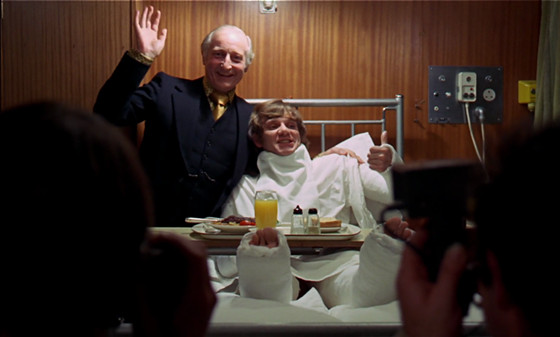
The main character of Stanley Kubrick’s adaptation of Anthony Burgess’ novel of the same name is Alex (Malcolm McDowell), a highly intelligent but sociopathic teenager whose interests are rape, classical music, and “ultra-violence”. After murdering a woman, Alex is sentenced to 14 years in prison. Two years into his sentence, he becomes the test subject for a form of aversion therapy intended to rehabilitate criminals in short time frames.
The process involves strapping the subject to a chair, injecting them with drugs, and propping open their eyes while they watch pornographic and graphically violent films, which will provoke nausea and anxiety in the subject. However, because the film was set to the music of Ludwig van Beethoven, Alex’s favorite composer, he finds himself sick upon hearing the composer’s music.
Alex is released from prison only to find himself ostracized by his friends and family. After being beaten by his former friends, he collapses at the home of a crippled author (Patrick Magee) who Alex had assaulted early in the film. When the author realizes who Alex is, he drugs him and locks him in a room while loudly playing Beethoven’s “Symphony No. 9” from the floor below. Alex, unable to stand the violent sickness, attempts suicide by throwing himself from the window.
Alex survives the attempt, and finds that he no longer feels an aversion towards sex or violence. He receives a visitor from the Minister of the Interior who apologizes for the harm that has come toward Alex. He offers Alex a job in return that he be used as a propaganda tool. The Minister brings in a stereo playing Beethoven’s Ninth Symphony while Alex has thoughts of himself having sex with a woman in front of an applauding crowd while delivering the film’s chilling final line: “I was cured, alright.”
Kubrick omitted the final chapter of the novel, in which Alex decides to live a peaceful lifestyle – a wise move on Kubrick’s part as the original ending diluted the book’s message of morality and its satirical view of behaviorism.
6. Chinatown (Roman Polanski, 1974)

Roman Polanski’s “Chinatown” stars Jack Nicholson as Jake Gittes, a private detective hired by Evelyn Mulwray, a woman who believes her husband is having an affair; however, the woman who hired Gittes was not the real Evelyn Mulwray. Evelyn’s husband is found dead and the real Evelyn (Faye Dunaway) hires Gittes to investigate the murder, uncovering many dark secrets and conspiracies along the way.
Gittes discovers that Evelyn’s father Noah Cross (John Huston) had killed Evelyn’s husband and years earlier had raped his daughter, which resulted in her becoming the mother of her sister. Gittes confronts Cross who forces Gittes to drive him to his daughter. When they reach her, the police detain Gittes while Evelyn fires at Cross, who is only mildly wounded. In response, the police open fire, killing Evelyn while Cross makes his escape with his daughter/granddaughter.
The film’s ending is among cinema’s greatest, ending the story in a memorably fatal way, befitting of the movie’s bleak tone.
5. Bicycle Thieves (Vittorio De Sica, 1948)
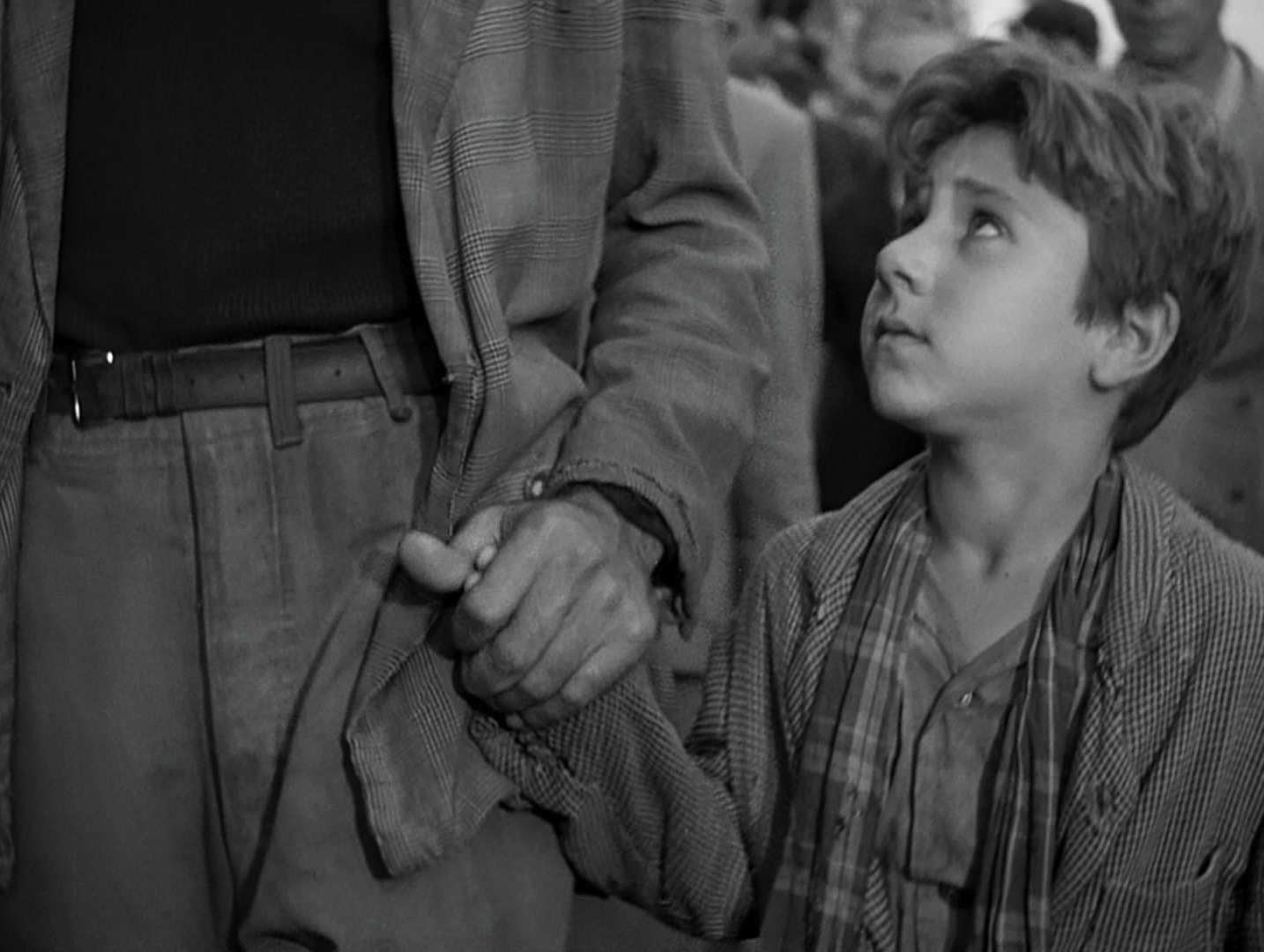
The most famous film of the Italian neorealist movement, “Bicycle Thieves” follows Antonio, a poor man who, along with his young son, searches Rome for his stolen bicycle that is vital for his job.
Their search leaves them empty-handed. Antonio desperately attempts to steal a bicycle, but is caught by its owner and humiliated by a crowd. The owner, noticing his visibly distressed son, demands that the crowd release him. He refuses to press charges, but Antonio is still without a bicycle. The film’s final shot is of Antonio and his son walking slowly into a crowd to an uncertain future.
What makes this ending work is its ambiguity. Is Antonio able to keep his job? Will he be able to provide for his family? Has his son lost respect for him? We don’t know. We so desperately want to see Antonio succeed, but Vittorio De Sica doesn’t give the audience the satisfaction of a happy ending, instead giving us a shockingly realistic portrait of post-World War II Italy.
4. Requiem for a Dream (Darren Aronofsky, 2000)
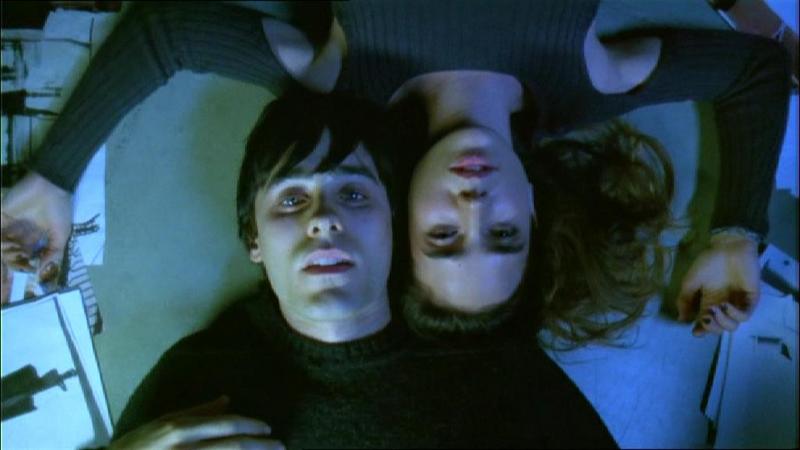
Darren Aronofsky’s “Requiem for a Dream” is a portrait of four individuals who are all suffering from drug addiction. Sara (Ellen Burstyn) is an elderly woman who develops an addiction to weight-loss after receiving a phone call informing her that she has won a spot on a television show. Her son, Harry (Jared Leto), is a heroin addict who, alongside his girlfriend Marion (Jennifer Connelly) and best friend Tyrone (Marlon Wayans), resorts to theft to fund their addictions.
In the film’s climactic scenes, Sara is admitted to a mental hospital after she begins to suffer from psychosis. She is subjected to many forms of treatment, but after they fail, she is given electroshock therapy as a last resort. Harry is hospitalized after his left arm becomes infected.
The doctor notices symptoms of drug use and calls the police, who arrest Harry and Tyrone. In prison, Harry is transferred to a hospital where his arm is amputated, while Tyrone is relentlessly taunted by the guards. Meanwhile, Marion, desperate for drug money, performs sex acts in the middle of a crowded room.
Due to the survival of the characters, the already agonizing ending is made even worse because the characters actually survive; death would release them from their suffering, but because they survive, they’re forced to wallow in their own private hells with no chance of ever breaking free.
3. Grave of the Fireflies (Isao Takahata, 1988)
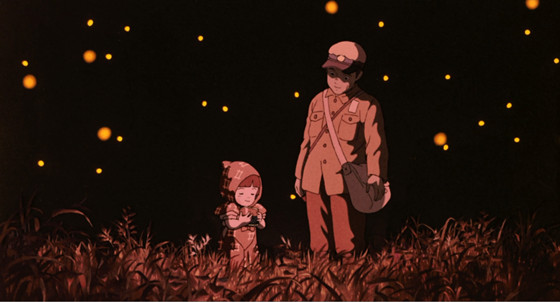
Set in Kobe during the waning days of World War II, “Grave of the Fireflies” tells the tale of two siblings, Seita and Setsuko, two orphaned children struggling to survive on their own after the city is bombed.
Living in an abandoned bomb shelter as they find themselves low on food, Seita is forced to loot homes to make ends meet while Setsuko grows increasingly ill. Seita, after withdrawing all the money from his mother’s bank account to buy a large quantity of food, returns home to find a dying Setsuko hallucinating; she dies later that night.
Seita cremates his sister’s body, places her ashes in a candy tin and seeks shelter, but succumbs to malnutrition some time later. The film ends with the spirits of Seita and Setsuko happily reuniting, finally free of their suffering.
We know that Seita and Setsuko won’t survive as the first line of the film reveals their fate, but because we know the outcome of the story, our hopes for a happy ending are cut down by the knowledge that we know they will die. However, this fills us with hope that things won’t be so bad in the meantime, which makes the film all the more poignant.
2. Dancer in the Dark (Lars von Trier, 2000)
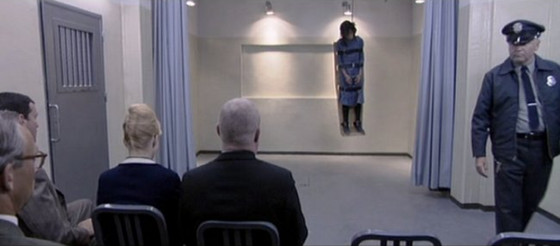
The final film in Lars von Trier’s “Golden Heart Trilogy” (preceded by “Breaking the Waves” and “The Idiots”) is a musical focusing on Selma (Bjork), an idealistic factory worker whose sight is rapidly deteriorating due to an eye condition; she is saving money to pay for an operation that will prevent her son from suffering from the same condition.
Selma often slips into trancelike states where she imagines the world around her as a musical film, which costs her her job. She comes home to put her final payment into her son’s surgery fund, only to find it empty. When she goes next door to report the theft to her neighbor, Bill (David Morse), a police officer, she discovers that he has stolen the money. When Selma tries reclaim the money, Bill pulls a gun on her, but shoots himself in a struggle.
Bill begs Selma to kill him and take the money, which she begrudgingly obliges by performing a coup de grace with the deposit box; however, she is arrested and convicted of murder, for which she is given the death penalty. On the day of her execution, she becomes hysterical until she learns that her son’s operation was a success. With her head in the noose, she begins to sing the film’s final musical number until she is abruptly hanged.
Bjork’s performance as Selma is one of the most emotionally draining performances in film history; she portrays the character’s naive, almost childlike, optimism so flawlessly and convincingly; in fact, it’s almost uncomfortable to watch, especially in the final scene as she realizes she is about to be executed through no fault of her own and there is nothing she can do to stop it.
1. Se7en (David Fincher, 1995)

David Fincher’s “Seven” is about detectives David Mills (Brad Pitt) and William Somerset (Morgan Freeman), and their search for a serial killer who uses the seven deadly sins as his modus operandi.
After five victims, the killer surrenders himself to Mills and Somerset. The killer admits that there are two more victims and takes the detectives to a remote location.
A delivery van arrives and leaves a box for the detectives. While Somerset examines the box, the killer antagonizes Mills by telling him about his jealousy of his married life. Meanwhile, Somerset opens the box and is horrified by its contents. The killer continues to taunt Mills, while Mills repeatedly asks Somerset what is in the box. The killer reveals that he has killed Mills’ wife and placed her head in the box, with her death representing envy.
The killer tries to goad Mills into shooting him, while Somerset talks him out of it, but after the killer reveals that Mills’ wife was pregnant, Mills’ shoots him, his death representing wrath and completing the seven deadly sins. The police arrive and arrest Mills’, who’s now traumatized from the ordeal.
Possibly David Fincher’s best film and by far his darkest, the dark atmosphere and cruel ending of “Seven” help set it apart from other serial killer films of the time and makes it a complex and highly disturbing neo-noir thriller.
Author Bio: Raine is a cinephile and aspiring filmmaker living in St. John’s, Newfoundland and Labrador. He enjoys films from all countries, genres and eras, but is especially fond of the New German Cinema films of the 70s.